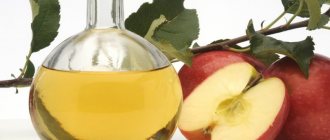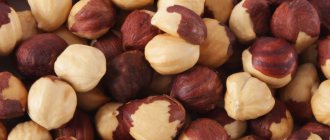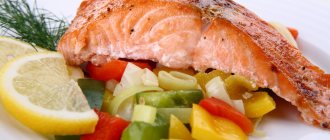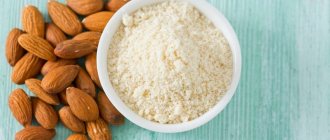Canned tuna: benefits and harms, calorie content
There is no doubt about the beneficial properties of fish, although many believe that canned seafood has less nutritional value than cooked fresh seafood.
Canned tuna is one of the popular products, which is used as an independent dish with various side dishes, as well as for preparing salads and soups. Tuna meat has a layered structure, the fillet is easily separated from the bones. White meat from the back is used to make expensive canned food and is even considered a delicacy in some countries. The remaining small pieces and gray meat from the sides of the fish are used to produce cheaper products.
Tuna fishing
In the land of the rising sun, this fish is a national treasure. Amazing tuna auctions take place here, for which you have to wait in line all night. The record holder among underwater inhabitants sold at auction is a bluefin tuna weighing 222 kg, which cost $1.76 million.
Fish are caught in two ways: medium-sized specimens are caught industrially, and large ones – more than 1.5 m – are caught individually with bait. It is not easy to pull out a huge tuna: it drags a boat or boat behind it for hours. Therefore, the extraction of this marine inhabitant is akin to a difficult hunt.
Composition of canned tuna
It is known that fish is a source of protein; its content in canned tuna meat reaches 30%. This protein is complete and easily digestible, containing all 8 essential amino acids for adults, as well as arginine and histidine, which are essential for children.
Tuna meat is rich in unsaturated fatty acids belonging to the omega-3 complex, which are not produced in the human body. It contains virtually no saturated fat, cholesterol and carbohydrates.
This fish contains a large number of macro- and microelements. It is rich in potassium, magnesium, phosphorus, sodium, zinc, iron, iodine, chromium, cobalt. In addition to them, tuna meat contains several dozen more different mineral salts. Also, many vitamins were found in the flesh of this fish, especially vitamin B6 and nicotinic acid.
The calorie content of tuna depends on the method of canning. 100 g of fillet preserved in oil contains about 230 kcal. Tuna in its own juice is a lower-calorie dish; 100 g of fish contains only 96 kcal, so this product can be considered dietary. The gray meat on the sides of the fish is looser, waterier, less fatty and high in calories, but its iron content is much higher than in white fillet.
Composition and beneficial properties
The value of canned tuna is explained by the large number of nutrients - vitamins, micro- and macroelements.
Below is a table with their content per 100 grams of product.
| Nutrient | Amount, mg | % of daily value |
| Vitamins | ||
| B4 | 29.3 | 5.9 |
| PP | 14 | 70 |
| B6 | 0.3 | 24.5 |
| E | 0.2 | 1.3 |
| B2 | 0.15 | 8.3 |
| B5 | 0.1 | 3 |
| B1 | 0.05 | 3.3 |
| B9 | 0.004 | 1 |
| B12 | 0.0026 | 106.3 |
| D | 0.0012 | 8 |
| Microelements | ||
| Iron | 1.2 | 6.7 |
| Fluorine | 1.0 | 25 |
| Zinc | 0.7 | 5.8 |
| Manganese | 0.13 | 6.5 |
| Copper | 0.1 | 10 |
| Chromium | 0.09 | 180 |
| Selenium | 0.07 | 128.4 |
| Iodine | 0.05 | 33.3 |
| Cobalt | 0.04 | 400 |
| Nickel | 0.006 | — |
| Molybdenum | 0.004 | 5.7 |
| Macronutrients | ||
| Chlorine | 1373 | 59.7 |
| Sodium | 960 | 73.8 |
| Potassium | 296 | 11.8 |
| Phosphorus | 228 | 28.5 |
| Sulfur | 225 | 22.5 |
| Calcium | 24 | 2.4 |
| Magnesium | 24 | 6 |
Benefits for immunity
Unsaturated fatty acids from canned tuna:
- participate in the structure of cells of the immune system;
- increase the activity of T-lymphocytes (regulators of the immune response) and macrophages (cells that destroy harmful bacteria).
Prevention of nervous system diseases
100 grams of canned tuna contain the daily requirement of cyanocobalamin (B12), which:
- protects nerve cells from damage;
- prevents the development of dementia and some mental illnesses;
- helps strengthen memory.
Improving the functioning of the cardiovascular system
Quite a high content of Omega-3 (170-300 mg) with niacin (PP), makes canned tuna beneficial for:
- prevention of atherosclerosis;
- strengthening the walls of blood vessels;
- blood thinning;
- normalization of pressure.
Strengthening bone and muscle tissue
It is difficult to overestimate the positive effect of canned tuna on the musculoskeletal system. The high content of easily digestible protein helps build muscle tissue, and when losing weight, protects it from destruction. There are all the amino acids a person needs.
The following macroelements contribute to increasing bone strength and regeneration:
Benefits for the cardiovascular system
Many scientists associate the good health and longevity of residents of coastal areas in different countries with the presence of large amounts of seafood in their diet. The omega-3 complex contained in tuna meat helps prevent the development of atherosclerosis, one of the main causes of cardiovascular diseases. Many studies have shown that regular consumption of this fish helps reduce the content of triglycerides and low-density lipoproteins in the blood (they are responsible for the formation of atherosclerotic plaques on the walls of blood vessels).
How much and in what form to eat
Tuna is widely consumed in any form. For example, in Japan - raw. The most delicate sushi is prepared from them.
For Europeans, this is a mandatory heat treatment. Tuna can be fried, baked, boiled, canned into fitness salads, used as a composition for making pasta, and much more.
The daily norm for people involved in weight lifting is 150-200 grams. For the average lazy person, doctors recommend consuming about 50-70 grams.
Tuna also has dietary properties and therefore should be used as part of a therapeutic and preventive diet for the older generation and people with diabetes.
The benefits of fish for immunity
Acids belonging to the omega-3 group are involved in maintaining homeostasis and take part in ensuring an adequate immune response during inflammation. The vitamins contained in canned tuna are necessary not only to strengthen the immune system in general, but also to ensure tissue regeneration processes.
Unsaturated fats and many microelements, such as selenium and zinc, have antioxidant properties, protecting the body's cells from harmful chemicals. That is why their presence in the diet will help prevent premature cell death and aging of the body.
Tuna Nutrition Facts and Nutrients
The nutritional profile of tuna can vary slightly depending on the type of tuna, as well as how it is prepared. For example, there are more calories in canned tuna in oil compared to the number of calories in canned tuna in water. Uncanned tuna contains much less sodium than canned tuna. In general, all tuna is low in calories but rich in protein, selenium, niacin and vitamin B12.
A standard can of tuna (170 grams) contains approximately:
Calories : 191 kcal Proteins : 42.1 g. Fat : 1.4 g. Selenium : 133 mcg (190%) Niacin : 21.9 mg (110%) Vitamin B12 : 4.9 mcg (82%) Vitamin B6 : 0.6 mg (29%) Phosphorus : 269 mg (27%) Sodium : 558 mg (23%) Iron : 2.5 mg (14%) Magnesium : 44.6 mg (11%) Potassium : 391 mg (11%) Zinc : 1.3 mg (8%) Riboflavin : 0.1 mg (7%)
In addition to the nutrients listed above, tuna also contains some thiamine, vitamin E, pantothenic acid, and copper.
Musculoskeletal health
Canned tuna contains a lot of calcium, phosphorus and magnesium, which are necessary for the formation and growth of bones and teeth.
The protein that this fish is so rich in is a “building material” for the human body and, first of all, muscle tissue. That is why eating this fish is very useful for children, adolescents, pregnant women, athletes and people who have an increased need for this substance. Fish oil, which is rich in sea fish, is also recognized as a useful product for the normal growth and development of children.
Is tuna good for diabetes and pancreatitis?
People suffering from diabetes can greatly benefit from eating tuna. Omega-3 acids help maintain normal insulin levels, which makes the patient's daily activities easier. Such properties mean that if you have diabetes, it is not only possible, but also necessary to eat.
The benefits of tuna pate are also obvious for pancreatitis. For this disease, a strict diet is prescribed, excluding any fatty foods. Since tuna contains very little fat, its benefits for those suffering from this disease are undeniable.
Advice! Drinking fluids increases the beneficial effects of tuna consumption. It is advisable to drink more water to maintain insulin levels.
The dangers of canned tuna
Fish is one of the common allergens; eating canned tuna can cause an allergic reaction.
When following diets that reduce the amount of protein in the diet, it is recommended to limit the consumption of seafood.
Canned food with butter is a very fatty and high-calorie product, so they should not be consumed if you have atherosclerosis, obesity, diseases of the pancreas and gall bladder. If you have these diseases, it is better to choose tuna canned in its own juice.
This product may also be harmful due to the accumulation of mercury in fish meat. The older and larger it is, the more of this substance accumulates in it. Of course, the amount of mercury that can accumulate in tuna is very small. However, some researchers do not recommend consuming it more than twice a week. They believe that if you eat fish more often, mercury may accumulate in the body in dangerous concentrations.
TV channel “Trust”, program “Do you want to live long?”, theme of the issue “Tuna. Beneficial features":
OTV, program “Morning”, story about how to choose canned tuna:
Features of eating tuna
So, the benefits and harms of tuna for the human body are not disputed. But what's the best way to eat it? In modern stores you can see a lot of carcasses, steaks and canned goods. What to choose to increase benefits and minimize harm?
Recommended reading: Are canned fish healthy?
When choosing canned fish, you need to remember one rule. When purchasing canned food in its own juice, the saturated fat content will be 2 grams less than in the case of the product in oil. In addition, light-colored fish contain less mercury than dark-colored fish.
How to get more benefits if you prefer fresh fish? Don't be afraid to buy tuna steaks: they can't do any harm if they're a quality product. You need to make sure it's fresh by checking the piece for any dark brown spots or iridescent sheen. Chilled steaks should smell like the fresh ocean, not have a strong fishy smell. In this case, the buyer will not harm himself.
Since medical advice suggests the benefits of consuming fresh tuna once or twice a week, there are an endless number of recipes you can come up with.
Even if you add oil to fish when cooking, it is still a healthier choice compared to fatty meats (such as beef, pork and other popular protein options).
Advice! Tuna meat provides athletes with energy for difficult exercises and reduces recovery time afterwards. It is therefore wise to increase your daily intake of freshly cooked fish to improve your overall health.
Calories in canned tuna
More and more people are now trying to eat healthy and switch to foods that can benefit the body. But choosing the right nutrition for a particular person can be difficult, since you need to know well the properties of certain products and take into account their calorie content. Fish is often recommended as a dietary food, and we will talk about it, namely tuna.
It is a predator that lives in the ocean and feeds on other representatives of marine fauna. This is a fairly large fish, reaching a length of 5 meters, and its meat can be boiled, fried, stewed, baked, canned, and is also used for making sushi or salads.
Types of tuna
A total of seven species of this fish are subject to industrial fishing. These include:
- Common or bluefin (Thunnus thynnus). It is bluish-black in color with silver stripes. Migrates long distances throughout the world's oceans and inhabits tropical, temperate and even cooler waters. It can reach about 4.3 meters in length and 800 kg in weight. Used to prepare sashimi and steaks.
- Yellowfin (T. albacares). It has a yellowish color and blue stripes on each side. Found in the Atlantic Ocean, it can reach 180 kg. The population is now greatly reduced as it is the most common species consumed as food.
- White or longfin (T. alalunga). It lives throughout the Atlantic and Pacific oceans and in the Mediterranean Sea. Its maximum size is about 1.3 meters and 45 kg. Longfin tuna have a dark blue back and a silvery-white belly. It is used more often for preparing canned food.
- Big-eyed (T. obesus). Resembles a yellowfin, but has large eyes. This species is usually found in tropical and subtropical, warmer waters of the Atlantic, Pacific and Indian oceans. It can grow up to 2 meters or more in length and weigh up to 200 kg. Used for frying and preparing various dishes.
- Small Atlantic (T. Atlanticus). It lives in the Atlantic Ocean in warm waters, as well as in the Mediterranean Sea. Despite the name, it can reach a length of 120 cm. It is distinguished by lean, bright red meat and is used mainly in the form of canned food.
- Bonito or skipjack. (Katsuwonus pelamis). Grows to approximately 90 cm and 23 kg. It lives in tropical and subtropical waters of oceans around the world. It is used smoked and dried, in Japan - for preparing national dishes, including dried bonito shavings.
- Mackerel (Auxis Thazard). Found worldwide in tropical and temperate waters. The fish has a large dorsal fin with high spines, is distinguished by a silvery-blue color with dark wavy lines and a white belly. It is used for both canning and cooking.
Energy value
Sea creatures contain a large number of useful components, but do not provide much energy. The calorie content of such products is quite low, and tuna is no exception. It cannot be compared in energy value with meat or other products of animal origin, but at the same time this fish has an exquisite taste, and it can be used even during diets in order to obtain the elements necessary for the body and not harm it. For example, 100 g of tuna contains 21-29 milligrams of protein and 1.2 milligrams of fat. This fish contains virtually no carbohydrates.
Calories in fried tuna
It is 150 kilocalories per 100 grams of fish. The BJU ratio is:
- protein 20 grams;
- carbohydrates 6 grams;
- fat 5.5 grams.
Tuna in vegetable oil
Regardless of the cooking method, fish remains healthy. If we talk about this product cooked in vegetable oil in its own juice, then its calorie content will be 190 calories per 100 g. Moreover, such food will be dominated by proteins that are well broken down by the body, vitamins, potassium, magnesium, manganese, phosphorus and others.
Efficiency in losing weight
The effectiveness of using tuna for weight loss lies in the fact that it is a low-calorie product. Thanks to the high content of Omega-3 fatty acids in fish, the body functions properly and receives enough energy for the whole day. This nutritional system includes the consumption of other healthy foods, including vegetables and fruits. They are nutritious and make it easier to endure a strict three-day diet.
The reason for the effectiveness of the tuna weight loss technique is that this product contains little fat (0.8% per 100 g). Moreover, these fats are unsaturated, i.e., considered healthy. Such food contains a lot of protein (28% per 100 g), which does not allow fat to be deposited in the body.
A tuna nutrition system will help you lose weight if you adhere to the following rules:
- You should exercise regularly. Every day you need to spend 30 minutes on this. If you can’t do this every day, then you can go to the gym 3-5 days a week and train for about an hour, which allows you to burn extra calories.
- You need to drink 2 liters of water. This allows you to remove toxins from the body and reduce fluid retention, which causes swelling.
- Fruits and vegetables should be eaten without restrictions. Tuna goes well with them. As a result, the body is saturated with essential nutrients. Vegetables and fruits reduce appetite because they contain large amounts of fiber.
- It is recommended to eat 5-6 times a day. Dividing food into smaller portions reduces cravings between meals.
They drink tea without sugar, and use any vegetables for salad.
Storage rules
When canning, various products undergo special processing and can be stored for up to three years in a closed jar. Information about shelf life is indicated on the packaging itself. And there is also information on how best to preserve certain products. It is recommended that after purchasing canned tuna, transfer the contents into a glass jar and prevent the possibility of air entering there. This container can be stored in the refrigerator for a short time.
In the next video you will find an episode of the TV show “Test Purchase”, dedicated to tuna in its own juice.
Canned foods rich in protein
Anchovy
Protein content: 24 g per 85 g product
Among canned foods, anchovies are the winner in terms of the amount of protein they contain. Because of their size, they do not contain as many toxins as their larger cousins.
Remember: To prevent the anchovies from appearing too salty, soak them in water for 30 minutes and then dry them.
Canned corned beef
Protein content: 24 g per 85 g product
Canned beef contains enough protein to build muscle.
Remember: Cook canned beef with vegetables or rice, or use as the main ingredient for a sandwich.
Tuna
Protein content: 22 g per 85 g product
There's a lot to be happy about here. Less expensive canned tuna contains more protein than more expensive white tuna in the same can.
Remember: To save a few calories, buy your tuna in a can with water, not oil.
Chick
Protein content: 21 g per 85 g product
By using white chicken in salads and sandwiches, you'll add essential protein to your diet.
Remember: Look for manufacturers whose products contain less sodium.
Sardines
Protein content: 21 g per 85 g product
In addition to protein, canned sardines also contain high amounts of omega-3 fats and vitamin D. Research shows that the more vitamin D we consume, the more testosterone we produce.
Remember: The best sardines are considered to be Wild Planet sardines.
Beans
Protein content: 20 g per 1 cup of product
Beans are perhaps the cheapest source of protein and the most accessible. Each can contains 13 g of dietary fiber.
Remember: Just like with sardines, the best canned beans are Wild Planet brand beans.
Dried lentils
Protein Content: 13 g per 1/4 cup per serving
Lentils are an excellent choice for those looking to increase their intake of protein, fiber, and other vital minerals.
Remember: Unlike beans, lentils do not need to be soaked. Just simmer it over low heat for about 20 minutes. Serve lentils with chopped turkey or chicken breast, chopped vegetables and lemon sauce.
High protein processed meat products
Roast beef
Protein content: 18 g per 85 g product
A lunch that includes meat is often a better option as it contains more protein. Most are surprised to learn that roast beef is also one of the leanest foods.
Remember: Look for brands such as Applegate, as they do not contain nitrites or nitrates, high intakes of which can lead to cancer.
Canadian bacon
Protein content: 15 g per 85 g product
Canadian bacon contains six times less fat than regular bacon. Therefore, the ratio of protein to fat in Canadian bacon is much better.
Remember: Sometimes Canadian bacon may have another name: “pea” bacon.
Chorizo
Protein content: 21 g per 85 g product
Pasta, omelet or salad made with Spanish sausage will make your meal even more nutritious and rich in protein.
Remember: Experienced cooks know that chorizo does not need to be cooked before eating. However, the Mexican version of this sausage requires a little frying.
Pepperoni
Protein content: 18 g per 85 g product
The high amount of protein found in pepperoni can be a great reason to eat a slice of homemade pizza before bed.
Remember: Sodium levels in pepperoni vary, so find the one with the least amount of sodium and stick with it.
Roast turkey
Protein content: 18 g per 85 g product
Roasted turkey chunks are essentially almost pure protein, making them a top choice for lunch sandwiches.
Remember: Try to avoid meat products that are already seasoned. Salt, sugar and various artificial flavors will only harm you.
High Protein Snacks
Jerky
Protein content: 13 g per 28 g product
Jerky is one of the best protein foods if you want a quick snack.
Remember: Look for brands that do not contain MSG and nitrites.
Peanut butter
Protein content: 8 g per 1 tablespoon
Peanut oil rightfully occupies a leading place in protein content among all other oils.
Remember: Forget about similar low-fat foods. They just replace fats with not entirely healthy sugar.
Nuts
Protein content: 6 g per 56 g product
Nuts such as peanuts, cashews, and almonds will add more protein and healthy unsaturated fats to your daily diet.
Remember: If you're watching your sodium intake, look for foods labeled "unsalted."
Chips
Protein content: 4 g per 28 g product
The best chips containing protein are black bean chips.
Remember: Try the chips with Greek yogurt.
High Protein Foods
Smoothie
Protein content: 16 g per 1 glass
The best sources of protein are homemade smoothies. However, if you don't have time to cook them, you can buy them from the store.
Remember: Make sure the label actually says lctoprotein and not just fruit, which can easily lead you to a sugar overload.
Tofu
Protein content: 12 g per 85 g product
If you are following a meatless diet, then tofu, which contains adequate amounts of protein, may be ideal for you.
Remember: Try grilling or frying tofu. This will make it even tastier and healthier.
High Protein Frozen Foods
Green soybeans
Protein content: 12 g per 85 g product
Green beans will give you a boost of plant-based protein, fiber, vitamins and essential minerals.
Remember: Cook the beans as directed on the package, then season with fresh lemon juice, smoked paprika and a pinch of salt.
Green pea
Protein content: 7 g per 1 glass
Green peas contain more protein than any other vegetable. Plus, it is an excellent source of fiber.
Remember: When you buy frozen green peas, make sure you can easily feel the individual peas. If you only feel a large piece of ice in the bag, it means that the peas have been frozen more than once and are clearly not of good quality.
Frozen Greek yogurt
Protein Content: 6 g per 1/2 cup
Frozen yogurt contains twice as much protein as regular yogurt.
Remember: Look for yogurts that contain less sugar.
High protein grains
wheat sprouts
Protein content: 6 g per 28 g product
Wheatgrass consists of three components: the germ, the bran, and the germ. Sprout is the most nutritious and contains the highest amount of plant protein. Feel free to use it to add extra protein to your oatmeal, pancakes, or smoothies.
Remember: Wheat sprouts are best stored in the refrigerator or freezer.
Soba noodles
Protein content: 12 g per 85 g product
These buckwheat noodles can be safely eaten at night as they contain more protein than any other noodle. Moreover, it cooks very quickly.
Remember: After cooking, you need to rinse the noodles to remove excess starch that makes the noodles sticky.
Calorie content Tuna canned in its own juice. Chemical composition and nutritional value.
Nutritional value and chemical composition of “Canned tuna in its own juice.”
| Nutrient | Quantity | Norm** | % of the norm in 100 g | % of the norm in 100 kcal | 100% normal |
| Calorie content | 100 kcal | 1684 kcal | 5.9% | 5.9% | 1684 g |
| Squirrels | 23.5 g | 76 g | 30.9% | 30.9% | 323 g |
| Fats | 0.6 g | 56 g | 1.1% | 1.1% | 9333 g |
| Water | 74 g | 2273 g | 3.3% | 3.3% | 3072 g |
| Vitamins | |||||
| Vitamin A, RE | 17 mcg | 900 mcg | 1.9% | 1.9% | 5294 g |
| Vitamin B1, thiamine | 0.05 mg | 1.5 mg | 3.3% | 3.3% | 3000 g |
| Vitamin B2, riboflavin | 0.15 mg | 1.8 mg | 8.3% | 8.3% | 1200 g |
| Vitamin B4, choline | 29.3 mg | 500 mg | 5.9% | 5.9% | 1706 g |
| Vitamin B5, pantothenic | 0.214 mg | 5 mg | 4.3% | 4.3% | 2336 g |
| Vitamin B6, pyridoxine | 0.35 mg | 2 mg | 17.5% | 17.5% | 571 g |
| Vitamin B9, folates | 4 mcg | 400 mcg | 1% | 1% | 10000 g |
| Vitamin B12, cobalamin | 2.99 mcg | 3 mcg | 99.7% | 99.7% | 100 g |
| Vitamin D, calciferol | 4.5 mcg | 10 mcg | 45% | 45% | 222 g |
| Vitamin E, alpha tocopherol, TE | 0.85 mg | 15 mg | 5.7% | 5.7% | 1765 g |
| Vitamin K, phylloquinone | 1 mcg | 120 mcg | 0.8% | 0.8% | 12000 g |
| Vitamin RR, NE | 14 mg | 20 mg | 70% | 70% | 143 g |
| Macronutrients | |||||
| Potassium, K | 250 mg | 2500 mg | 10% | 10% | 1000 g |
| Calcium, Ca | 24 mg | 1000 mg | 2.4% | 2.4% | 4167 g |
| Magnesium, Mg | 33 mg | 400 mg | 8.3% | 8.3% | 1212 g |
| Sodium, Na | 400 mg | 1300 mg | 30.8% | 30.8% | 325 g |
| Sera, S | 236.2 mg | 1000 mg | 23.6% | 23.6% | 423 g |
| Phosphorus, Ph | 220 mg | 800 mg | 27.5% | 27.5% | 364 g |
| Chlorine, Cl | 165 mg | 2300 mg | 7.2% | 7.2% | 1394 g |
| Microelements | |||||
| Iron, Fe | 1.2 mg | 18 mg | 6.7% | 6.7% | 1500 g |
| Yod, I | 3 mcg | 150 mcg | 2% | 2% | 5000 g |
| Manganese, Mn | 0.015 mg | 2 mg | 0.8% | 0.8% | 13333 g |
| Copper, Cu | 45 mcg | 1000 mcg | 4.5% | 4.5% | 2222 g |
| Molybdenum, Mo | 4 mcg | 70 mcg | 5.7% | 5.7% | 1750 g |
| Selenium, Se | 72 mcg | 55 mcg | 130.9% | 130.9% | 76 g |
| Fluorine, F | 430 mcg | 4000 mcg | 10.8% | 10.8% | 930 g |
| Chromium, Cr | 55 mcg | 50 mcg | 110% | 110% | 91 g |
| Zinc, Zn | 0.7 mg | 12 mg | 5.8% | 5.8% | 1714 g |
| Sterols (sterols) | |||||
| Cholesterol | 30 mg | max 300 mg |
The energy value of tuna canned in its own juice is 100 kcal.
Primary Source: Created in the application by the user. Read more.
** This table shows the average levels of vitamins and minerals for an adult. If you want to know the norms taking into account your gender, age and other factors, then use the “My Healthy Diet” application.
Micro- and macroelements
The benefits of fish and the amount of kcal are determined by its composition, concentration of vitamins and elements. Tuna contains many substances that help the body systems function normally:
- a large amount of vitamin PP (niacin), which replenishes 77.5% of the daily requirement per 100 grams of seafood;
- vitamin B6 (pyridoxine) replenishes 40% of the norm;
- vitamin B1 thiamine is concentrated in a volume of 20% of the daily dose;
- phosphorus calculated at 35%;
- sulfur in a ratio of 19%;
- potassium – 14%;
- Among the microelements, chromium, iodine, and cobalt stand out, 100 grams of which provide 400%, 180% and 33% of the daily requirement.
The calorie content of tuna or the energy value of the product, kcal, shows the amount of energy that the body receives from the product during its digestion.
Among the microelements, chromium, selenium and cobalt stand out. The latter substance renews cells, removes cholesterol, and slows down the aging process. Cobalt helps proteins and fats to be synthesized faster. Chromium can have a positive effect on heredity by maintaining DNA integrity.
Macronutrients are as important as micronutrients. 300 g of tuna eaten covers the daily requirement of phosphorus. The substance takes part in the formation of cells. 100 g of seafood contains 190 mg of sulfur, which is equal to 19% of the norm. The substance is necessary for healthy skin, bone tissue, and improved hair condition. Potassium strengthens the heart muscles, equalizes blood pressure, and reduces the manifestations of arrhythmias, such as tachycardia, angina pectoris, and extrasystole. The macronutrient is required for the transmission of nerve impulses to the brain. It also affects the normal functioning of the brain and memory, strengthening it. Potassium is involved in the development of the intestines, kidneys, bones and muscles.
What are the benefits of canned tuna?
Of course, gourmets appreciate the taste of chilled tuna fillets. Amazing dishes are prepared from this type of fish both for every day and for the holiday table. Believe me, you can also create a gastronomic masterpiece from canned fish. Cook a fragrant soup or make an incredibly tasty snack.
So, nutritionists advise eating tuna at least once a week. How is this fish useful for the human body? The chemical composition of red fish fillets is impressive. The healing properties of canned tuna include:
- prevention of cardiovascular pathologies;
- breakdown of bad cholesterol;
- preventing the formation of plaques;
- cleansing of vascular lumens;
- normalization of blood circulation;
- activation of brain activity;
- treatment of dermatological ailments, including allergic ones;
- improvement of well-being in diabetes mellitus;
- suppression of the activity of radical compounds;
- prevention of the appearance of malignant neoplasms;
- increased mood;
- strengthening the nervous system;
- improvement of well-being in case of depression and neurotic disorders;
- cleansing liver cells of toxins;
- promoting the full production of liver enzymes;
- strengthening nail plates and curls;
- improving the condition of the skin;
- strengthening bone tissue;
- lowering blood pressure levels.
As you can see, the list of beneficial properties of canned tuna is pleasantly surprising. Still, this list cannot be called exhaustive. Thus, after conducting research, scientists came to the conclusion that tuna fillet has a beneficial effect on the functioning of the brain, so this product is recommended to be included in the diet of people engaged in daily mental work.
A variety of vitamins, micro- and macroelements, as well as fatty acids help strengthen the hair structure, nail plates and give the skin a healthy, radiant appearance.
In addition, canned tuna fillet is enriched with retinol. With vitamin A deficiency, vision impairment and decreased immunity are observed. To slow down the processes of premature aging and strengthen the immune system, you just need to systematically eat tuna fillet.
Many people today are trying to adjust their diet and gradually give up unhealthy foods. Instead, healthy natural foods appear on the menu. If you want to make up for protein deficiency, get gastronomic pleasure and satisfy your hunger, eat tuna fillet canned in its own juice.
On a note! The low nutritional value of tuna in this form allows you to eat fish while on a diet. There are no carbohydrates in tuna, but protein accounts for almost a quarter of the total mass. Tuna is very often found in the diet of athletes.
Another interesting fact. There are no helminthic infestations or other parasites in tuna fillets, since the fish are not susceptible to such infection. Accordingly, you can not worry and calmly introduce tuna fillet into your daily diet.
Chemical composition
For the full and coordinated functioning of internal organs and the proper flow of all processes in the human body, vitamins, nutrients and minerals, micro- and macroelements are needed. We mainly get them from outside, or more precisely, from food.
Anyone, even a child, will say that to feel good you need to eat well. Making a balanced diet is not an easy task. Nutritionists say that at least once a week there should be fish or other seafood on our tables.
Unfortunately, not everyone likes such dishes. We have to look for an alternative. This is where canned tuna appears on the home menu. The calorie content of tuna fillet varies. If you eat tuna in its own juice, the nutritional value of a 100 g serving is only 96 kilocalories.
But for lovers of canned fish in oil, the calorie content of tuna is a surprise. The nutritional value of tuna pieces in golden oil reaches almost 200 kilocalories, also per 100 g of product. The difference is significant, you will agree.
In any case, tuna fillet is a storehouse of micro- and macroelements and vitamins. Canned tuna contains the following ingredients:
By eating canned tuna fillet once a week, you can compensate for the deficiency of magnesium and iron. This delicious seafood is enriched with B vitamins, and as you know, they are considered the building material of our nervous system.
On a note! The cost of chilled tuna fillet is quite affordable, but the price of canned fish is much lower. By consuming canned fish in its own juice, you can replenish your vitamin and mineral reserves and normalize the functioning of your entire body.
What healthy things to cook
Due to its low calorie content, this fish is used in any menu, with the exception of vegetarian ones. It can be used by patients with diabetes of any type.
I suggest preparing several dishes suitable for both bodybuilders and the average person.
Green salad with tuna
You will need:
- 250 g pasta;
- 2 cans of canned tuna;
- 2 tomatoes;
- 2 cucumbers;
- 2 sweet peppers;
- salad greens;
- boiled broccoli.
For filling:
- 1.5 tbsp. olive oil;
- 0.5 tbsp apple cider vinegar;
- 1 tbsp. grated cheese;
- 1 tsp mashed garlic;
- 1 tsp dried basil;
- salt, pepper - to taste.
Finely chop the tomatoes, cucumbers, peppers, larger broccoli, tear the salad with your hands. Mix all. Combine the filling components in another container. Dress the salad.
Sandwich paste
You will need:
- 250 g low-fat processed cheese;
- 200 g canned tuna;
- 200 g low-fat cottage cheese;
- 3 tbsp. finely chopped onion;
- 1 tsp dried celery;
- salt.
Mix everything in a blender and put it in the refrigerator.
Tuna and bean salad
You will need:
- 200 g canned tuna;
- 200 g canned or boiled beans;
- 2 cucumbers;
- 4 tomatoes;
- juice of half a lemon;
- 1.5 tbsp. olive oil;
- salt, pepper, Provençal herbs.
Cut vegetables the way you like. Add the remaining components to them. Season with lemon juice, dried herbs, oil, and spices. You can savor it!
So, tuna must be on our tables. I hope my arguments were convincing. Bye bye!











